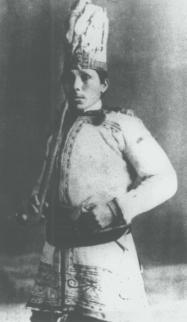Mohawks of Kanesatake or Kanehsata'kehró:non are a Mohawk First Nation in Quebec, Canada. In 2016 the band has a registered population of 2,508 members. Their main reserve is Kanesatake Lands located 48 kilometres (30 mi) west of Montreal. They also share the uninhabited reserve of Doncaster 17 with the Mohawks of Kahnawá:ke for hunting and fishing.

Demographics
editMembers of the Kanesatake First Nation are Mohawk. In October 2016, the band had a total registered population of 2,508 members, 1,115 of whom lived off reserve.[1]
Geography
edit44% of the Mohawks of Kanesatake live in the Indian reserve of Kanesatake Lands located 53 km west of Montreal in Quebec.[1][2] The reserve covers an area of 907.7 ha.[3] The band also shares the uninhabited reserve of Doncaster 17 located 16 km northeast of Sainte-Agathe-des-Monts with the Mohawks of Kahnawá:ke for hunting and fishing. The band is headquartered in Kanesatake.[4] The closest important cities are Laval and Montreal.[5]
Governance
editMohawks of Kanesatake are governed by a band council elected according to a custom electoral system based on Section 11 of the Indian Act. For the 2014 to 2017 tenure, this council is composed of the chief Serge Simon and six counselors.[6]
Notable Kanesatakehro:non
edit- Sonia Bonspille Boileau, filmmaker
- Steven Bonspille, former grand chief of Kanesatake
- Joseph Tehawehron David (1957–2004), artist
- Ellen Gabriel (born 1959), artist and activist
- James Gabriel, former grand chief of Kanesatake
- John Harding, former council chief of Kanesatake
- Joseph Onasakenrat (1845–1881), former grand chief of Kanesatake
See also
editReferences
edit- ^ a b "Registered Population". Crown–Indigenous Relations and Northern Affairs Canada. Government of Canada. Retrieved 5 December 2016..
- ^ "Reserve/Settlements/Villages". Crown–Indigenous Relations and Northern Affairs Canada. Government of Canada. Retrieved 5 December 2016..
- ^ "Reserve/Settlement/Village Detail :: Kanesatake Lands". Crown–Indigenous Relations and Northern Affairs Canada. Government of Canada. Retrieved 5 December 2016..
- ^ "Reserve/Settlement/Village Detail :: Doncaster 17". Crown–Indigenous Relations and Northern Affairs Canada. Government of Canada. Retrieved 5 December 2016..
- ^ "Geography". Crown–Indigenous Relations and Northern Affairs Canada. Government of Canada. Retrieved 5 December 2016..
- ^ "Governance". Crown–Indigenous Relations and Northern Affairs Canada. Government of Canada. Retrieved 5 December 2016..